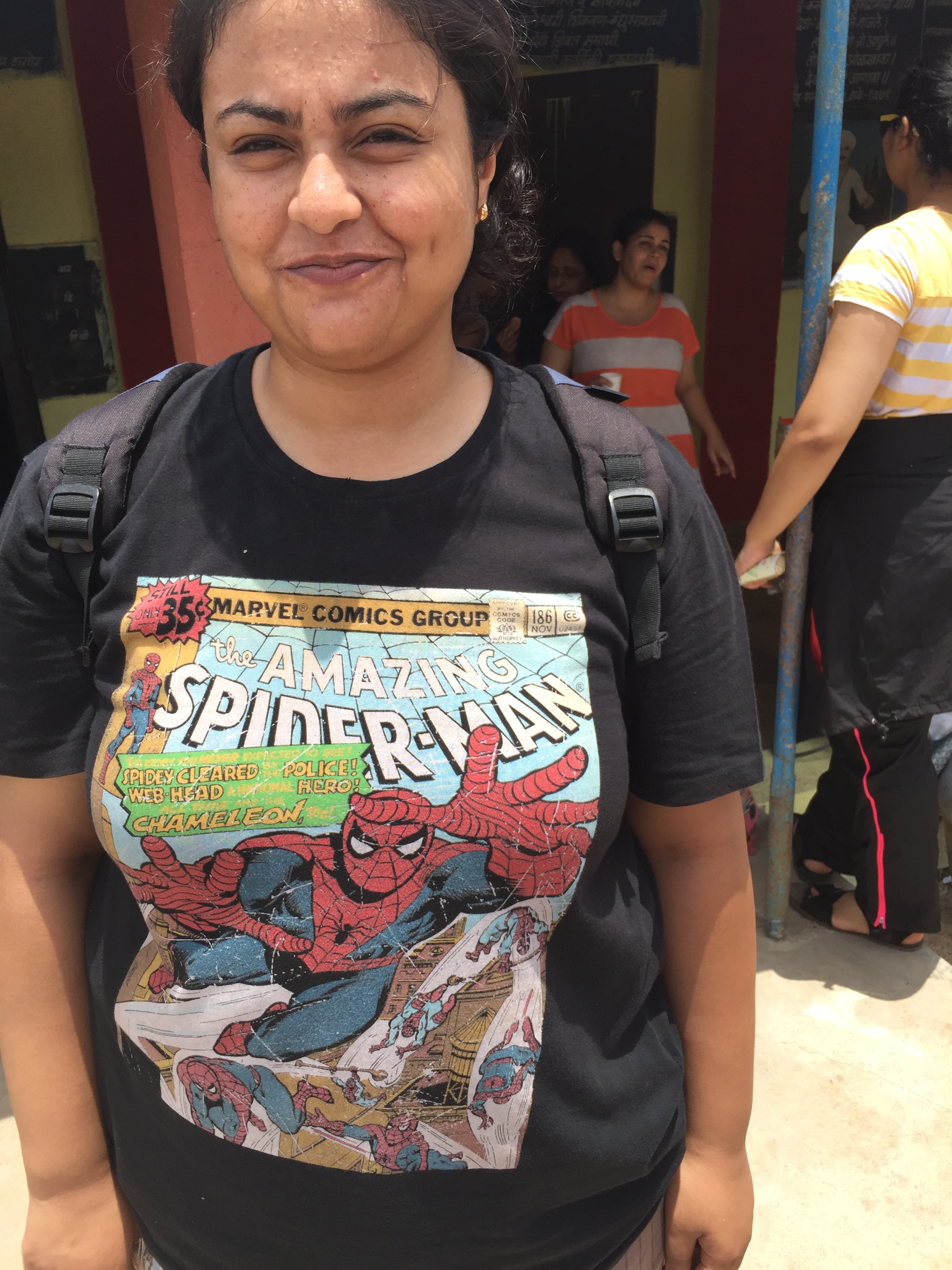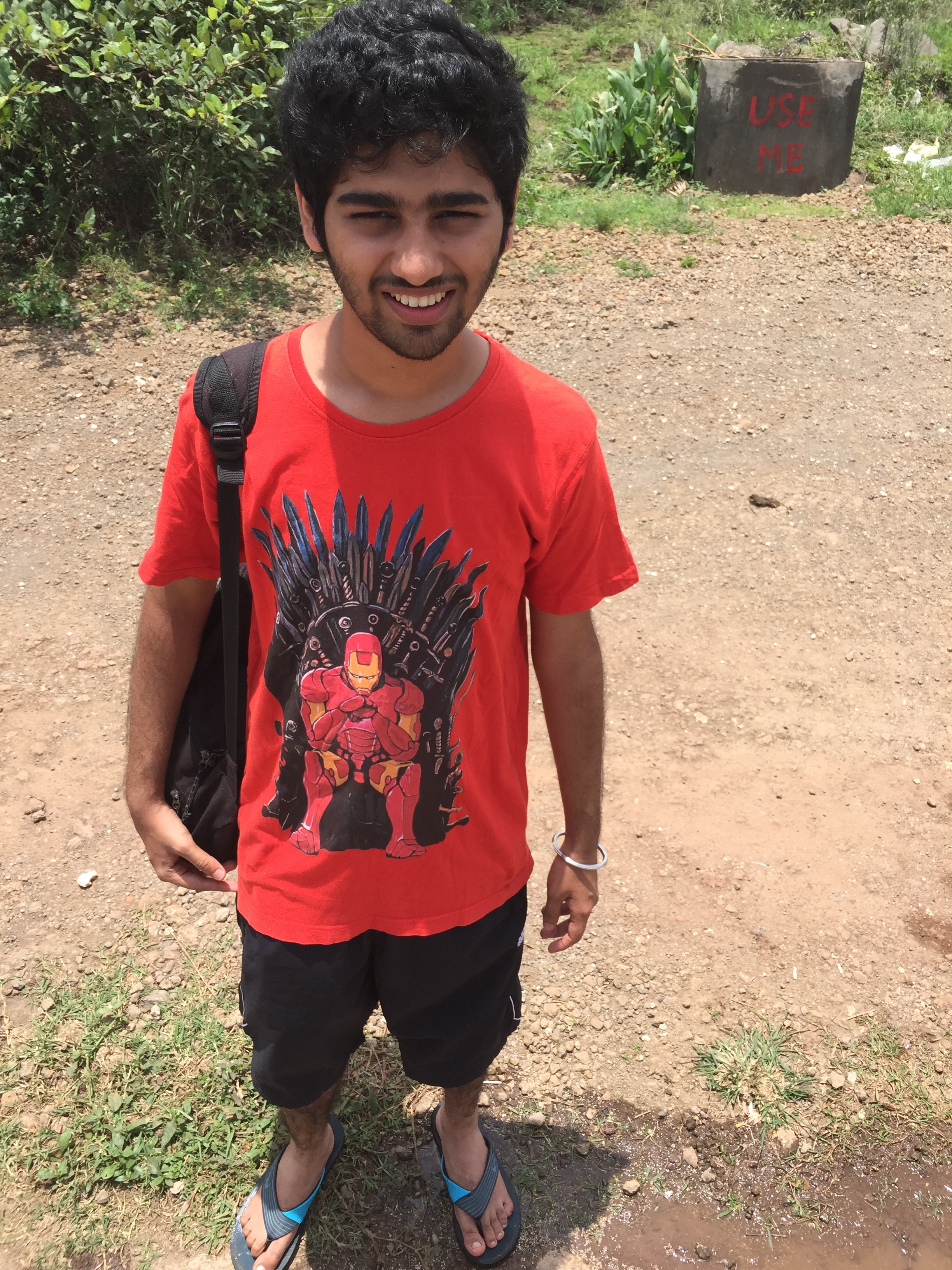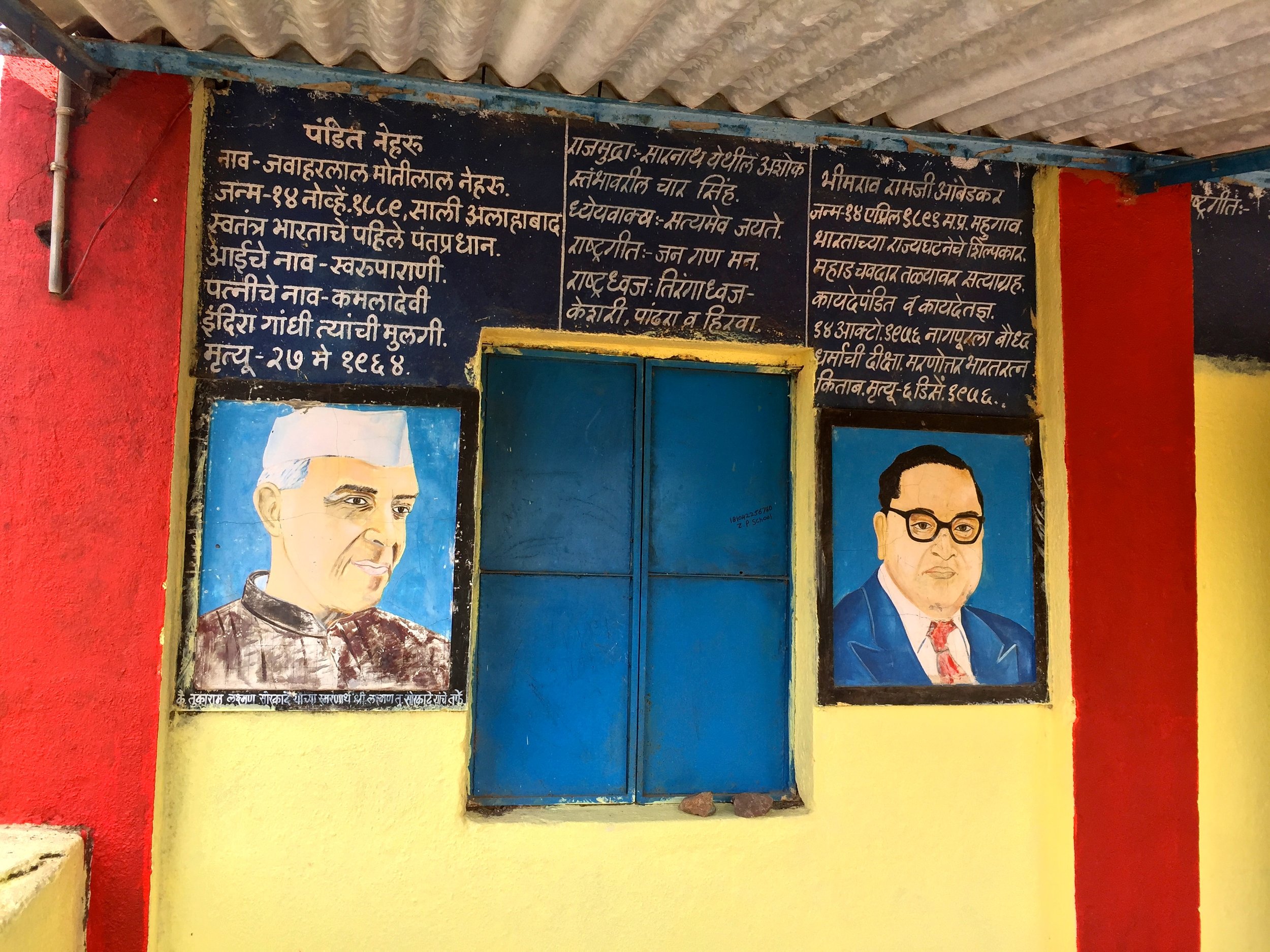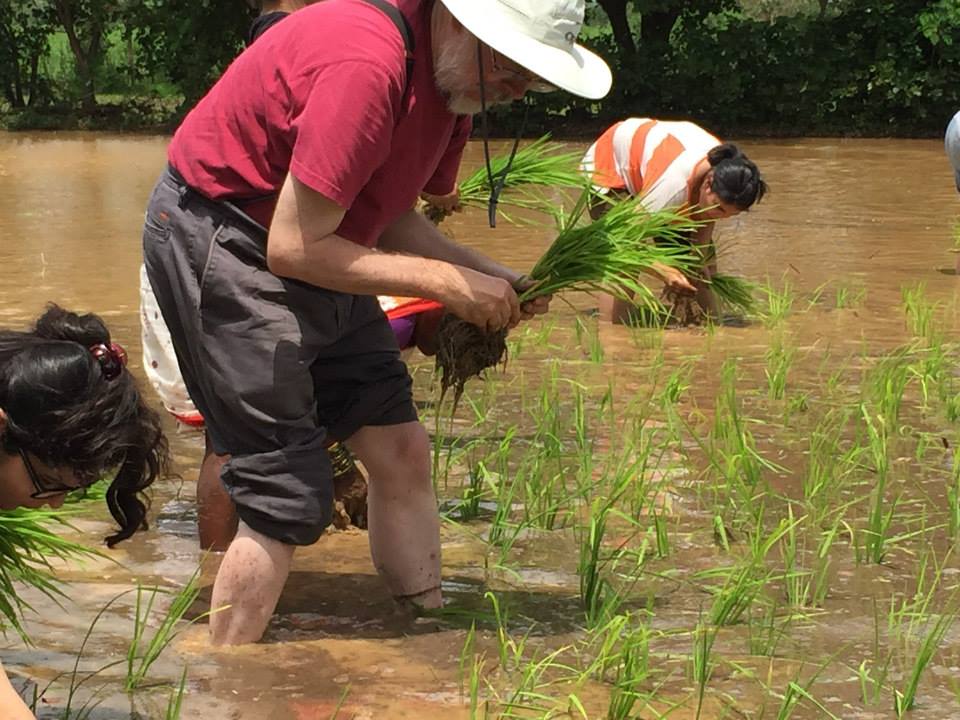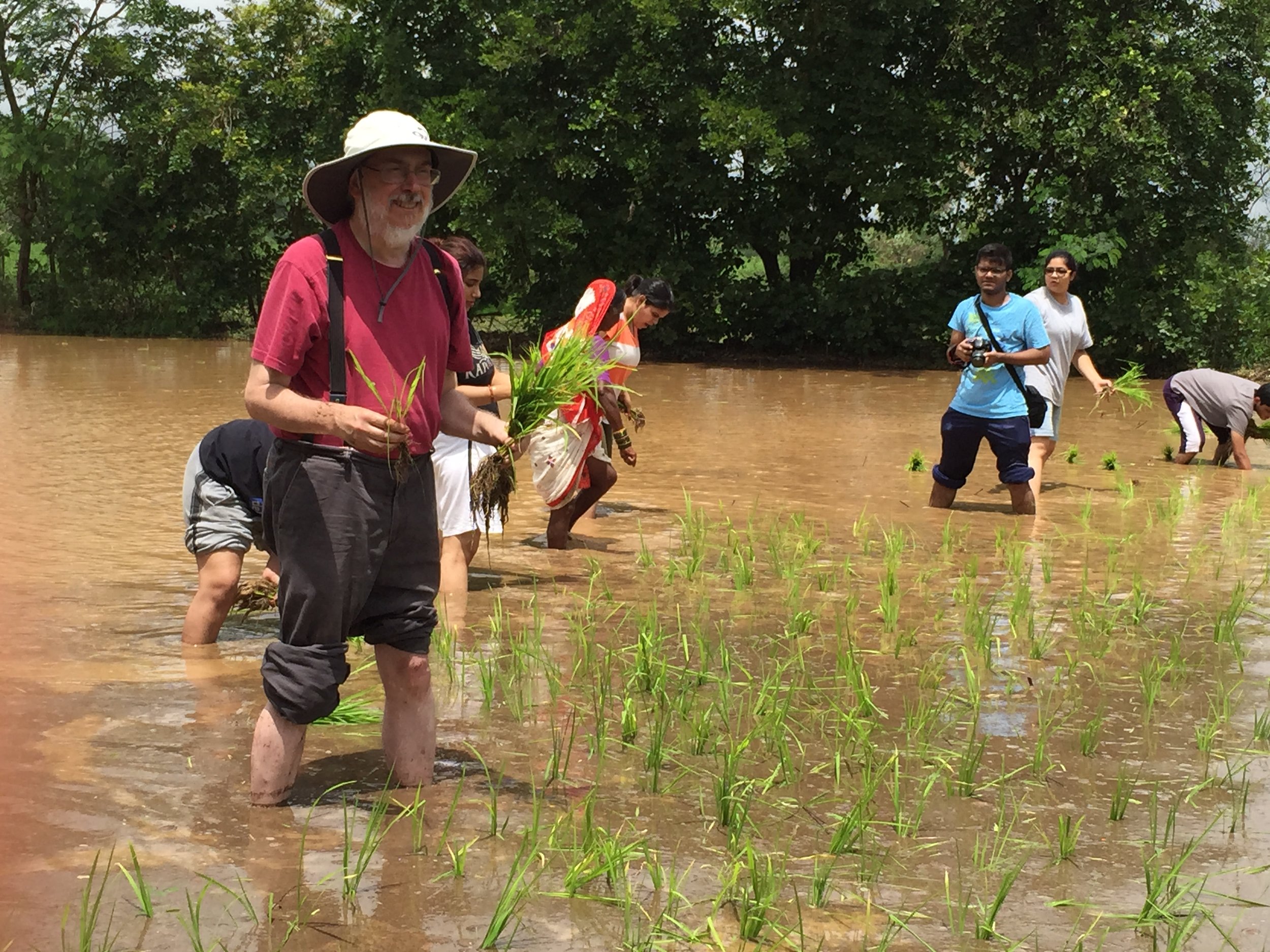Transplanting Rice in Rural India
/Early in the trip, we paid a visit to Sophia Polytechnique, which runs the Social Communications Media program, considered to be one of India's best communication and journalism programs. Sophia has historically been an all-women school, but has started to branch out in recent years to include more male students. The school had been founded in the 1970s with the goal of empowering and training women to enter the professional realm. They run a professional program for journalists, which runs 10 months, 2 semesters, and includes 10 courses – roughly the pace of the Journalism masters program we offer at USC. The program places a strong emphasis on experiential learning (learning by doing) and doing work out in the community with the goal of developing strong social commitments and civic engagement in their students. One of the things they do early on in the term is to take their mostly urban students out into the country side where they get to muck about in rice paddies transplanting rice. It turned out that they were going to be doing one of these field trips a few days later and I decided to join them for the experience. They shared with us a range of their student projects, many of which deal with issues of rural and migrant labor and problems of urban poverty. What follows is my diary entry for this day of the trip.
Early rise today – I am being picked up at 6:45 a.m. for our trip to the Kamshet rice fields with Sophia students and faculty. By the time I get to the bus stop, it’s clear I’ve started to corrupt my own field work, since word is getting around town that I am interested in Superheroes, so a number of the students are turning up wearing t-shirts with Spider-Man or Super-Man or Captain America. I later learn that they had been assigned to read the Fusion article about Superman and Immigration politics, and I get asked questions about it throughout the day.
My favorite shirt of the day mashed up Iron Man and the Iron Throne from Game of Thrones – I want that shirt!
The students are excited about the trip. Most of them grew up in urban areas and many have never been to a farm before, let alone worked with rice. Some of the faculty say their fathers are a bit ashamed that their daughters are going to work in the field for class or caste reasons. We are visiting a farm which belongs to Dinesh Balsaver, the father-in-law of Sunitha Chitrapu, the head teacher for this expedition, an alum of the Comm program at University of Indiana-Bloomington. She jokes that she has a PhD from America but her father-in-law is still making her work in the rice fields. Her father in law bought the farm land when he was in his 20s but only really started to work the land after he retired in his 60s. He spent his life selling chemical fertilizers, but he is now an outspoken advocate of organic farming processes (as we will hear later in the day). He is now in his 80s. The students have been full of anxieties about what might be lurking in the water – creepy crawlies, leaches – but I am happy to report that we confronted no such hazards.
The bus drivers are having a grand old time honking their horns back and forth amongst the truckers and other bus drivers they pass along the road. I am told this is a ritual to keep them all awake during long cross-country drives. But at one point, they all perform a song on their horns, which was pretty masterful, actually. At one point, a group of policemen try to pull the buss over. Sunitha suggests that they are going to try to shake us down for some bribes before they will let us pass. Much to her astonishment, the driver gives the cop one of these characteristic head woggles (which I read as something close to an eye roll) and then drives off without bothering to stop. The cops do not pursue us – as an American cop almost certainly would have.
On the return trip, the professors are more emboldened. One of the toll stops we encounter was supposed to be shut down on June 1. There had been a protest against the toll because it was illegally close to the others; the protestors vandalized the station. The government chastised them for the violence but agreed to shut down the toll by June 1. But it is clearly in operation. When one of the professors asks the toll booth operator about the situation, he waves us on through without charging, but then continues to collect money from all of the other vehicles in line behind us. But it’s a bad idea to do this for a bus full of journalism students, since they plan to write a follow up story.
We stop for breakfast at a kind of massive truck stop with many small shops and eateries. Except for the scale on which it is operating, it reminds me very much of similar roadside stops you could see along the road in the U.S.. For example, there are stands selling ice cream, popcorn, and especially dried fruit and various nut products. On the return trip, we pick up what is essentially peanut brittle to bring back to Cynthia.
From here, we are going higher into the Western Ghats mountains, which are breathtaking: not like the rounded hills of the Blue Ridge or the jagged and arid peaks of the West Coast chains. They do remind me of the images I have seen of the Himalayas but not nearly as high. They are lush right now. I am told that the monsoon season turn hills that are brown most of the year into something really lush with plant life, and that all of the cars we are seeing are driving north to enjoy the waterfalls which are formed from the rains. We do see some really beautiful ones from the bus. We also spot a few monkeys sitting along the side of the road watching the cars drive past. Every so often we see what seems like a massive apartment complex in the middle of nowhere. These are for people who drive up from the city for a country experience but expect to live precisely as they live back home. I’ve certain seen this tendency in the North Georgia mountains but never to such a literal degree.
As we get closer to the farm, we start to see a shift in attire – the men are now mostly wearing white, from the creased cap on the top of their heads down through their pressed jackets and creased pants, and riding motorcycles, because at a certain point, the bus is no longer able to make the turns on the winding country roads. The students walk, but the father-in-law insists on taking me by car out of respect for my age. (I was told by the way that when we had met the Sophia principal, she had been astonished that I knew so much about digital media because, “well, you know, he’s a gentleman of a certain age.”) You can imagine how well this privilege goes down with me, but I take it all in good humor. What are you going to do!
Since we arrive by car, we arrive a good deal earlier than the others, so I am taken on a tour of the farm. First, we visit a little three room school house.
All of the walls are covered by texts of various kinds, including elaborate charts of the alphabets and numbering system (with numbers identified in English, Hindi, and Marathi (the language of this region). There is a picture of Gandhi hanging over the blackboard. And there’s a television in the corner from which they receive educational broadcasts from the state. There are three rooms – one for preschool, one for the younger students, one for the older.
Outside the top two grades there are pictures and accounts of national leaders, including Nehru (another Prime Minister) and Ambedkar (the leader of the untouchables and author of the constitution, the subject of the graphic novel).
Outside the preschool classroom there are a series of cartoon characters. There are two that are clearly intended to resemble Mickey Mouse, one in western garb, one a bit more distorted in Indian clothing. And then there is a tall lanky fellow with a dog-like face and a tall cap who may or may not have been intended as Goofy. It is really hard to judge in this context since the localization process has been more extensive here.
Zhumber, the head laborer – a woman (more about her in a moment) – shows me her house. It is much more spacious than those we visited yesterday in the slums (and we are told that her son has gotten a high paying job in the city so this is not typical of a laborer’s house in the country). She has a massive salt water aquarium. I am most interested in her shrine – the television set is right in the middle, in a place of privilege, in an area set aside for the worship of her gods. We are also go out back to a shed where she has a massive black water buffalo which is used for farm labor.
By this time, we are all assembling, so I go with the others out to the rice fields, and we are given a lesson in how to transplant the rice. Apparently, rice grows better if it is uprooted and replanted during the growth cycle, so we are each handled several bundles of rice plants with dangling roots. Our job is to wade out into the water and press a cluster of three rice plants down into the mucky soil, pressing down with our fingers, not the roots. The water is actually warm since it is fairly shallow and thus gathers heat from the sun. The bottom of the river has some pebbles but is mostly oozy mud mixed with cow dug and compost veggie matter. The area where we are doing the planting is not quite solid so that the dirt spreads easily around your fingers.
We are moving out in shifts and each of us has about twenty minutes to experience the planting process under the supervision of the head laborer.
Zhumber is extremely dark skinned and withered, she walks barefoot at all times, and she wears very traditional pants that are swaddled around the back so as to avoid getting into the water. She lays down the plants machine-gun fast, even as we are still struggling to understand and repeat the process. I am sure she could have done everything the whole class did in roughly the same amount of time but she is very patient and smiling. I am told that she is the one who oversees all of the other laborers on the farm.
The teachers are urging the students to sing traditional farm labor songs, but none of them seem to know any, so one suggests they sing songs from Lagaan.
While we are working in the paddies, a male farm laborer comes up with a plow, which he surfs on top of, pulled behind two buffalo, as he is processing the field. Traditionally, men do the plowing and women do the planting. After our turn in the paddies, we go off to the pump where we wash our feet, hands, and legs of the mud, and then we walk down to the banks of the Indrayani river when we wait on a dam for the others to complete their tasks. As we are standing there, a woman and her daughter below are washing their clothes in the river and beating them out on the rocks.
After the time in the field, we go back to the school house where we are served cups of hot Chai and some pastry-like cookies, given a packet of the locally produced rice, and Dinesh Balsaver lectures us about the virtues of organic farming of rice. He explains basically that you pay a little more in the store, but that this process is much better for India, which has produced enormous poverty because it has done such damage to the soil over time, both because of the hot sun and the use of chemicals and salt-based water. These kinds of traditional farming methods are gradually restoring the quality of the land and making it possible to produce more crops and as a result, they are bringing more jobs to Indian farmers. The pitch for organic foods in the U.S. are very much pitched towards the health of the consumer, but this is about the health of the land and of the nation.

